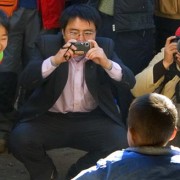Prof. Sam Baron’s 4 Secrets of Youth
This weekend we met with a good friend of ours for lunch: Professor Emeritus for Russian History and multiple book author Dr. Samuel Baron. Previously we had given a speech to professors emeritus and other retired professionals at Carolina Meadows.
Sam’s inspiring personality, huge life experience, bright mind, exceptional memory, and humor makes every meeting special and let me forget the 60 years age difference that separates us.
This time I asked Sam to share his secrets for a long and successful life. His answer is unbelievably simple. But ALL great things are simple, aren’t they?
1. Exercise 7 days a week. Vary your activities. If you’re really busy – walk to work.
2. Drink a bit alcohol from time to time – even every day, if you like.
3. Maintain an active social and intellectual life – meet people who you really enjoy being with, join a book club, go to the opera, join discussions.
4. Have luck!





